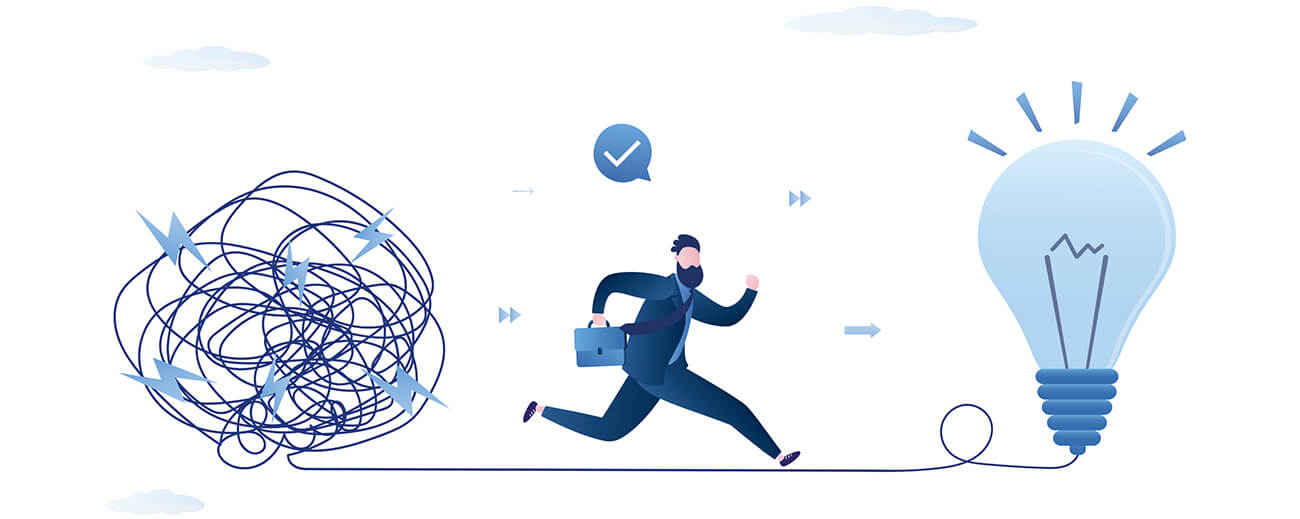“What If” There’s a Multi-Million Dollar Opportunity Hiding in Your Supply Chain Network?
A lot has changed for manufacturers over the past 18 months. You’ve no doubt made some adjustments to your product mix, production schedule, pricing, and potentially even your footprint to respond to the ongoing uncertainly in the market and wide fluctuations in demand. With business starting to stabilize, at least to some degree, now’s the time to take a closer look at your distribution network, costs, and productivity. You may be pleasantly surprised by where (and to what degree) savings opportunities exist.
The Power of “What if…?”
We worked with a privately held supplier of construction materials with over 1,000 employees and developed an analytical model of their business, incorporating the appropriate costs across 20+ sites. While they didn’t find any major savings opportunities in their freight costs, they did leverage the model to start asking some higher-level questions about their production and distribution strategy. That’s when things got interesting.
We ran a high-level optimisation of their largest division and analysed the total margin impact of various changes on the business. Specifically, we helped the team:
- Explore options for the number of sites needed to meet demand
- Model the financial impact of shifting production to lower cost facilities, none of which were running at full capacity
- Look at what would happen if they could produce every product type at every facility
None of these issues had ever been explored before in part because of raw material consistency issues and the high cost of freight to ship products over long distances—but mostly because it’s not the way the industry had ever operated. With the ability to ask any question and model the impact, however, the company soon turned up some big opportunities.
Finding the golden egg.
The initial analysis estimated an unconstrained potential annual savings of $11-12 million, even with higher freight costs. That was a “real eye-opener,” as the CEO himself said. “It made us think about whether we were going after the right opportunities, or if there was something bigger that we should be attacking first.”
When presented with such dramatic figures, the quick response of many business leaders is to question the integrity of the numbers. Rightly so. Often times, the analytical work itself often points to where companies need to dig out more information to generate accurate estimates. In our example, the credibility of the scenario analysis was bolstered by the close involvement of the company’s lead financial analyst who helped capture and validate all of the necessary data.
Keep in mind that, even when the numbers are unexpected or appear too good to be true, the reality is that manufacturing operations are extremely complex and they evolve organically based on assumptions and circumstances that change over time. Given the extreme changes faced by many businesses over the past year and a half, it will not be surprising for manufacturers to uncover significant hidden cost savings opportunities in their businesses today.
Consider what else can change.
Once you spot the opportunity, the next step, of course, is to bring it to fruition. Despite the encouragement of every leadership guru, most managers don’t really think “outside the box.” They look at how they’ve always done things and then try to figure out how to do them 3-5% cheaper.
With the construction material supplier project we’ve been discussing, capturing the potential benefits that we found required a different mindset and a viable execution plan. We started by looking at the feasibility of the suggested high-level changes. Instead of an initial assignment to evaluate a distribution network and freight costs, we shifted gears and started asking more provocative questions around their manufacturing and distribution strategies.
- What if we could consistently produce the same product in multiple locations?
- What if we could produce all of the product in one location and ship it further and still save money?
- What if we shift our focus to driving productivity in higher-performing, lower cost factories instead of trying to get more productivity out of specific plants that are underperforming?
- What if we rethink the number of plants or distribution centers needed?
- What if we look at our freight and production costs holistically–in tandem—instead of evaluating them independent of one another?
Of course, we had to factor in the company’s constraints and limitations. They couldn’t, for example, instantly start making every product in every production facility. We considered how much time, effort, and energy they would have to invest, and what could be realistically accomplished in a given timeframe.
In the final analysis, the near-term potential ended up somewhere between $3-5 million. That target, calculated by running a multitude of what-if scenarios, is a major opportunity for this company.
Do you know if your current business strategy will deliver the best possible financial results?
Again, a lot has changed. In the context of your business environment today, it’s well worth asking yourself:
- Do we have the right business strategies in place?
- Have we gone through the analytics to identify the right courses of action?
- Do we know which approach will give us the best results as quickly as possible?
Before taking a deep dive into specific productivity savings, it is perhaps better to look at the front of your business from a more holistic perspective. River Logic, TBM’s prescriptive analytics solutions partner, offers analytics solutions that let your key decision makers and data owners better understand the entire network—where you produce, how you produce, and how you distribute. And they offer modeling capabilities that let you explore all your “what ifs?” With the right people and the right tools, you’ll have the clarity you need to truly understand what’s best for your business now and what opportunities will deliver the greatest return.





